Why Did Vikings Burn And Bury Their Longhouses?
Ellen Lloyd - AncientPages.com - We know that ancient civilizations burned or buried their dead. That was common practice in ancient times, and the same applies today. What might sound unusual at first is the fact that Vikings also wanted their longhouses to die, so they either burned or buried their longhouses.
Once we understand why Vikings had this unusual tradition, it becomes quite logical and easy to follow their way of thinking.
Vikings had many customs. Credit: Adobe Stock - Fotokvadrat
The Vikings had no religion but they had customs, practices, and beliefs. Ancient Viking funeral traditions and rituals were very complex. Many relics in ancient tombs reveal that the type of burial a Viking received depended on his importance in society. Based on discovered archaeological evidence it seems that the funeral boat or wagon was a practice that was reserved for the wealthy. A great Viking warrior received a ship burial. This involved placing the deceased on the ship, sail him out to sea, and set the Viking ship on fire.
Vikings Lived In Longhouses
A typical Viking home was a longhouse (langhús), that was usually 5 to 7 meters wide (16 to 23 feet). Wealthy Vikings could live in very large longhouses that could be from 15 to 75 meters long (50 to 250 feet). Inside the longhouses there were several rooms, divided by walls and sometimes a large and imposing hearth, with stones set on end in the earth, mirroring the shape of the longhouse. Ventilation and illumination was provided through smoke holes in the roof.
A Viking longhouse. Image credit: Anne Pedersen- National Museum of Denmark
Vikings were familiar with candles, but they were expensive and not often used. Instead, light was provided with simple lamps made from available material that could, for example, a dished stone, which was filled with fish liver oil for fuel or, when available, seal or whale oil.
Cremation And Burial Of A Longhouse
Marianne Hem Eriksen, a postdoc at the Department of Archaeology, Conservation, and History at the University of Oslo has studied the custom of how Vikings burned and buried their Iron Age longhouses.
According to Eriksen, burial mounds may mark the tomb of a house as that of a human. After a longhouse burned to the ground, one or more burial mounds were placed on top of its remains.
Very few could receive a Viking ship burial. Credit: Adobe Stock - Alexisaj
Architecture takes on special importance as a collective expression of the organization and mindset of a culture, and people had a special relationship to their houses.
“To people in Madagascar, a house has its own life cycle. It is born, lives, grows old, and dies. The Batammaliba people of West Africa perform rituals during the construction of houses, the same rites of passage that they perform for newborn babies, adolescents, and adults.
When the house is completed, they perform a ritual where they “kill” the house. The house has been alive during the building process and must be killed to make it habitable for people. Many cultures believe that the house is metaphorically linked to the human body, “Eriksen explained.
Inside a Viking longhouse. Credit: Adobe Stock - Sunshower Shots
It took time and hard work to construct a longhouse. The house served as a shelter, home, and sometimes a symbol of power and status.
While studying seven longhouses in Scandinavia, Eriksen discovered there is a connection between burial sites and the doors leading into the house.
Some human remains had been placed under the thresholds or of graves being placed near entrances. In other cases, burial mounds have been placed over the door to the house as if to close the entrance. It’s obvious this had a ritual significance.
Vikings Believed There Was A Link Between Their House And Body - A House Had A Soul
‘Many of the Norse words that are related to houses are derived from the human body. The word “window” comes from wind and eye and refers to openings in the walls where the wind comes in. The word “gable”, i.e. the top of the end wall of the house, means head or skull.’
Vikings saw a link between the human body and the house. This suggested that the house borrowed many features from the human body. It’s very possible that Vikings believed the house had some kind of essence, some kind of soul, and this was the reason why they wanted to give their house a proper burial.
Inside a Viking longhouse. Image credit: Ribe Viking Center
The purpose of cremation is to reduce the body to fragments, perhaps to liberate the soul or the essence, and this is interesting since the houses may have been regarded as having an essence.
So, by burning down the house they may have had a wish to cremate it, to liberate the life force of the house. If houses and people could be part of a network that had “agency” – vitality and personality – this could at least be part of the explanation for the longevity of longhouses in Scandinavia.
The idea that your house plays an important part in our lives is not far-fetched. In modern times, we still have a strong relationship to our homes, especially the house where we grew up.
According to French philosopher Gaston Bachelard, “our first house is written into us, we carry it with us through life. Although we have walked up thousands of stairs, we never forget the staircase of our first childhood home, we recognize instinctively the steps that creak, and we never stumble. We carry the house with us for life.”
Vikings were not aware of Gaston Bachelard’s thoughts, but their houses were so important to them, they deserved a proper burial.
Updated on February 10, 2024
Written by Ellen Lloyd – AncientPages.com
Copyright © AncientPages.com All rights reserved. This material may not be published, broadcast, rewritten or redistributed in whole or part without the express written permission of AncientPages.com
Expand for referencesMore From Ancient Pages
-
 Oklahoma’s Mysterious Hollow Hill – Hidden Artifact Reveals A Frightening Story – Part 1
Ancient Mysteries | Jul 8, 2020
Oklahoma’s Mysterious Hollow Hill – Hidden Artifact Reveals A Frightening Story – Part 1
Ancient Mysteries | Jul 8, 2020 -
 Saptarishi – Seven Sages Who Guided Humanity During Four Great Ages
Featured Stories | Apr 2, 2019
Saptarishi – Seven Sages Who Guided Humanity During Four Great Ages
Featured Stories | Apr 2, 2019 -
 1500-Year-Old Mystery Of The Sandby Borg – Excavation Of Ringfort On Öland, Sweden
News | Jan 1, 2014
1500-Year-Old Mystery Of The Sandby Borg – Excavation Of Ringfort On Öland, Sweden
News | Jan 1, 2014 -
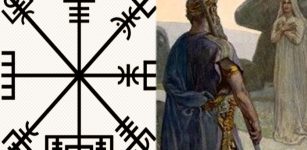 Vegvisir – Old, Sacred Norse Symbol Of Protection And Guidance
Ancient Symbols | May 23, 2020
Vegvisir – Old, Sacred Norse Symbol Of Protection And Guidance
Ancient Symbols | May 23, 2020 -
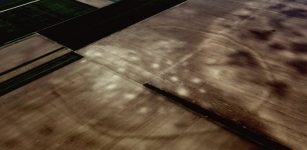 Vast Network Of Previously Unknown European Bronze Age Megastructures Discovered
Archaeology | Nov 20, 2023
Vast Network Of Previously Unknown European Bronze Age Megastructures Discovered
Archaeology | Nov 20, 2023 -
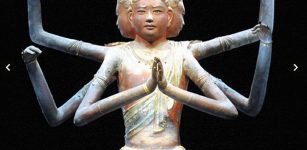 CT Scan Reveals Repairs And Damage Of 1,300-Year-Old Three-Headed And Six-Armed Statue
Archaeology | Feb 23, 2017
CT Scan Reveals Repairs And Damage Of 1,300-Year-Old Three-Headed And Six-Armed Statue
Archaeology | Feb 23, 2017 -
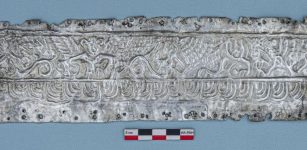 Unique Plate Of Winged Scythian Gods And Walking Griffons Discovered In Middle Don
Archaeology | Nov 19, 2021
Unique Plate Of Winged Scythian Gods And Walking Griffons Discovered In Middle Don
Archaeology | Nov 19, 2021 -
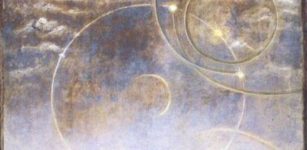 On This Day In History: Vädersol Painting Depicting ‘Sun Dog’ Phenomenon Observed Over Stockholm – On Apr 20, 1535
News | Apr 20, 2017
On This Day In History: Vädersol Painting Depicting ‘Sun Dog’ Phenomenon Observed Over Stockholm – On Apr 20, 1535
News | Apr 20, 2017 -
 The Black Obelisk Of Shalmaneser III – Great Assyrian Ruler
Artifacts | Dec 29, 2016
The Black Obelisk Of Shalmaneser III – Great Assyrian Ruler
Artifacts | Dec 29, 2016 -
 Did Ancient Seafarers In Southeast Asia Build Sophisticated Boats As Far Back As 40,000 Years Ago?
Archaeology | Feb 24, 2025
Did Ancient Seafarers In Southeast Asia Build Sophisticated Boats As Far Back As 40,000 Years Ago?
Archaeology | Feb 24, 2025 -
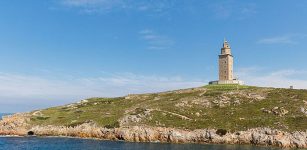 How Did Sea Level Rise Impact Human Groups During Mesolithic And Neolithic Periods?
Archaeology | May 20, 2022
How Did Sea Level Rise Impact Human Groups During Mesolithic And Neolithic Periods?
Archaeology | May 20, 2022 -
 What America’s First Board Game Can Teach Us About The Aspirations Of A Young Nation
Featured Stories | Jun 6, 2024
What America’s First Board Game Can Teach Us About The Aspirations Of A Young Nation
Featured Stories | Jun 6, 2024 -
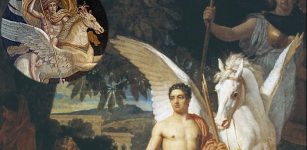 Bellerophon: Great Hero Of Homer’s Iliad Who Was Punished By Gods For His Pride And Arrogance
Featured Stories | Jul 13, 2021
Bellerophon: Great Hero Of Homer’s Iliad Who Was Punished By Gods For His Pride And Arrogance
Featured Stories | Jul 13, 2021 -
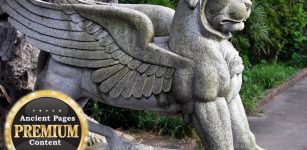 Strange Ancient Mechanical Flying Animals – Myths Or Advanced Ancient Technology? – Part 1
Ancient Mysteries | Mar 25, 2020
Strange Ancient Mechanical Flying Animals – Myths Or Advanced Ancient Technology? – Part 1
Ancient Mysteries | Mar 25, 2020 -
 Unique 9,000-Year-Old Shrine With Symbols Discovered At Neolithic Ritual Site In Jordan Desert
Archaeology | Mar 7, 2022
Unique 9,000-Year-Old Shrine With Symbols Discovered At Neolithic Ritual Site In Jordan Desert
Archaeology | Mar 7, 2022 -
 New Underwater Discoveries Made Around The Antikythera Shipwreck
Archaeology | Jul 21, 2023
New Underwater Discoveries Made Around The Antikythera Shipwreck
Archaeology | Jul 21, 2023 -
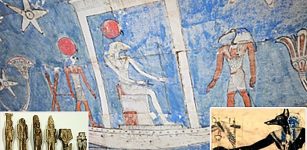 Ptolemaic Period’s Mummies With Nails And Tongues Of Gold Among Unique Remains Unearthed At Ancient City Of Oxyrhynchus, Egypt
Archaeology | Dec 19, 2024
Ptolemaic Period’s Mummies With Nails And Tongues Of Gold Among Unique Remains Unearthed At Ancient City Of Oxyrhynchus, Egypt
Archaeology | Dec 19, 2024 -
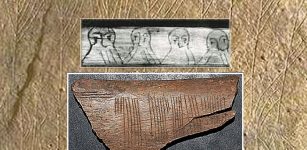 Mysterious Viking Code Jötunvillur Deciphered By Norwegian Researcher
News | Feb 24, 2014
Mysterious Viking Code Jötunvillur Deciphered By Norwegian Researcher
News | Feb 24, 2014 -
 On This Day In History: Myles Coverdale Who Printed First English Bible Died – On Jan 20, 1569
News | Jan 20, 2017
On This Day In History: Myles Coverdale Who Printed First English Bible Died – On Jan 20, 1569
News | Jan 20, 2017 -
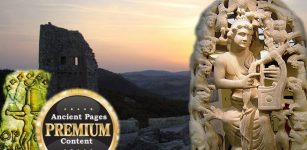 Perperikon, Tomb Of Orpheus And A Small Baffling Stone – Unraveling A Puzzling Connection That May Solve A Mythological Riddle
Ancient Mysteries | Feb 5, 2019
Perperikon, Tomb Of Orpheus And A Small Baffling Stone – Unraveling A Puzzling Connection That May Solve A Mythological Riddle
Ancient Mysteries | Feb 5, 2019





